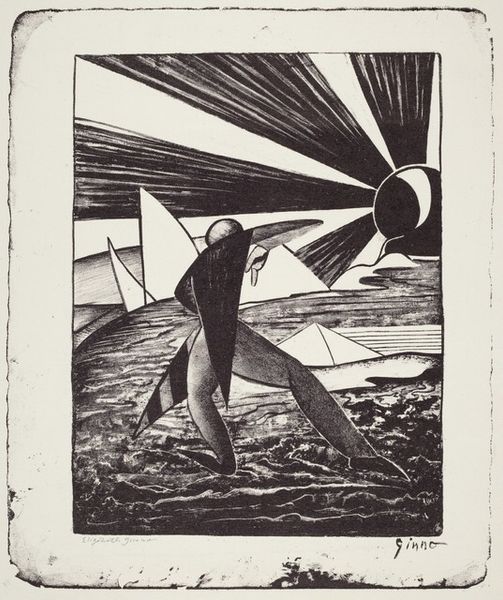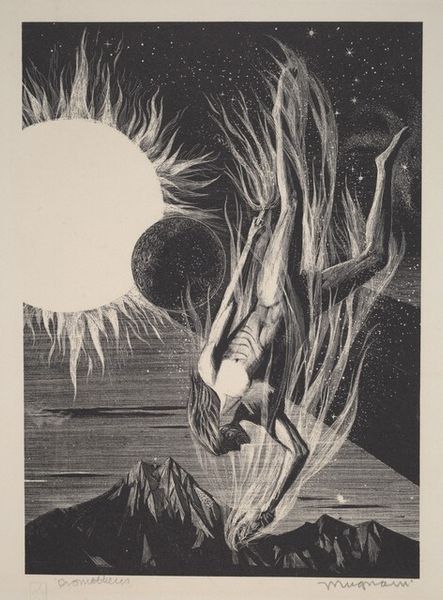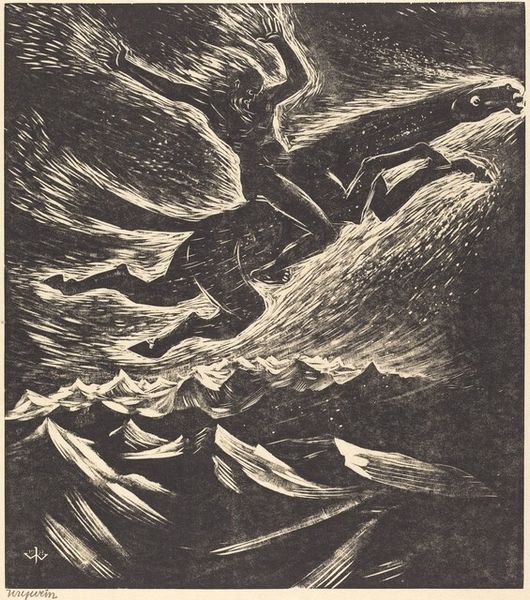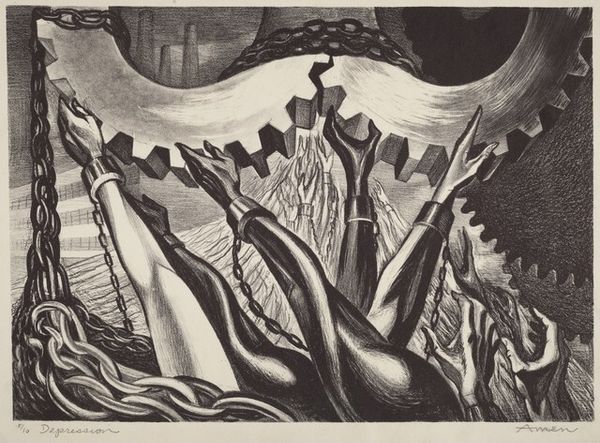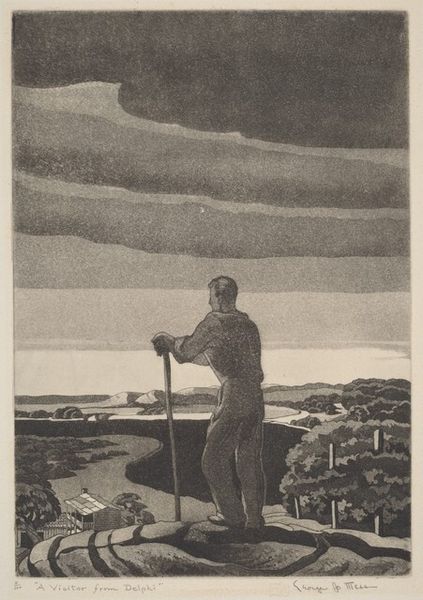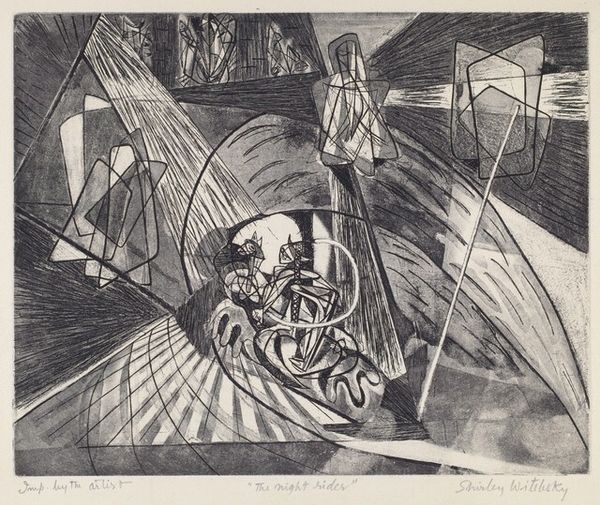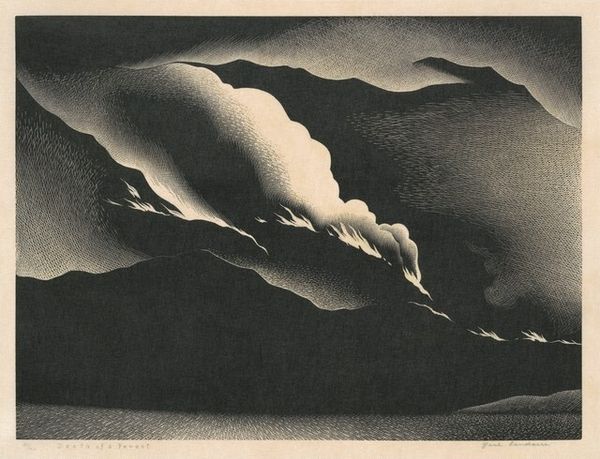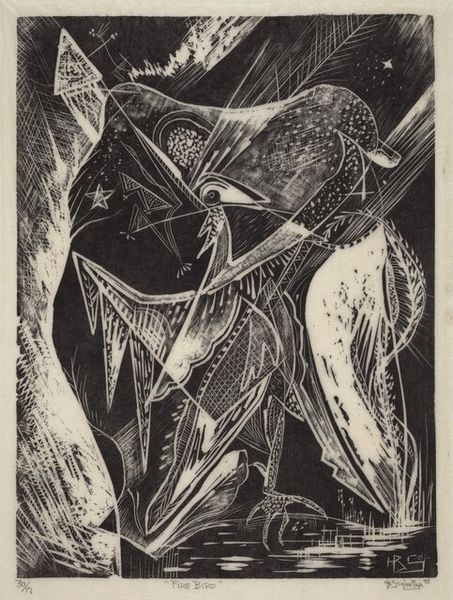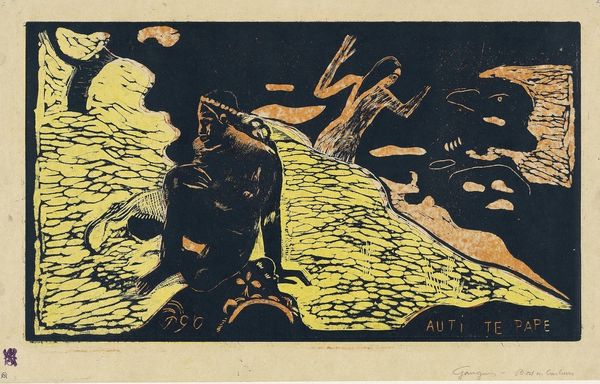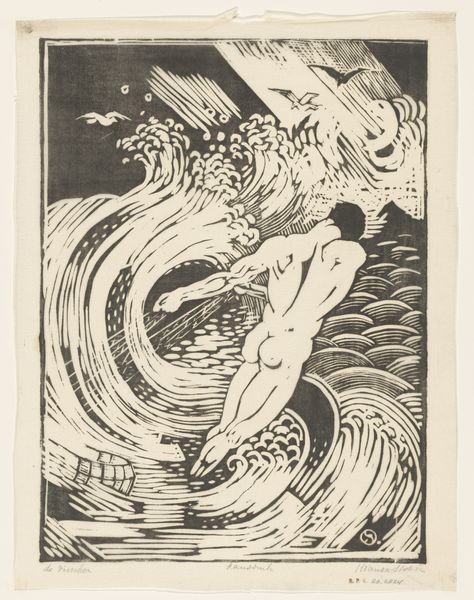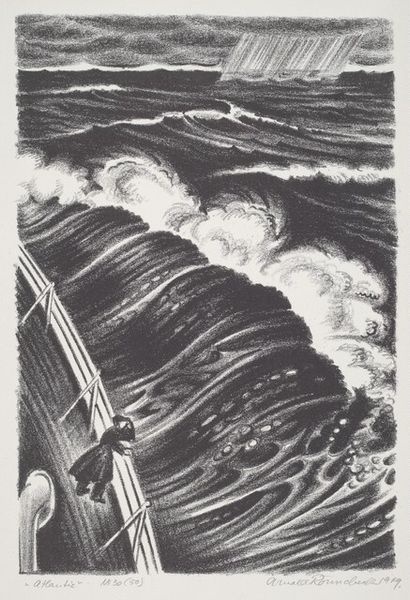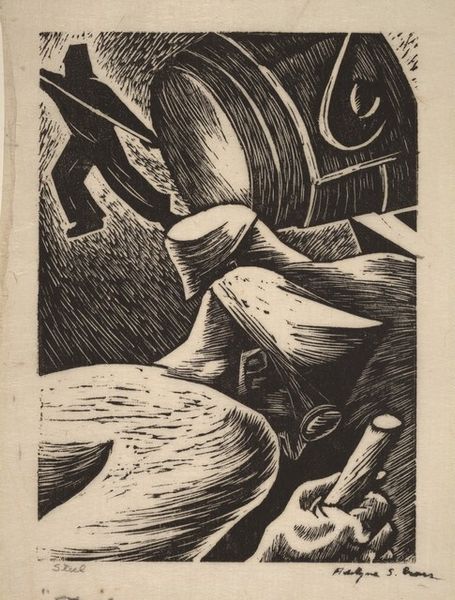
drawing, print, intaglio
#
portrait
#
drawing
# print
#
intaglio
#
figuration
#
social-realism
#
surrealism
#
abstraction
Dimensions: block: 200 x 285 mm sheet: 283 x 356 mm
Copyright: National Gallery of Art: CC0 1.0
Curator: Looking at Leon Gilmour’s intaglio print, "Let the Living Rise," made in 1937, one sees immediately how Gilmour masterfully balances Social Realism with an abstract style. The scene depicts a solitary figure in the foreground looking up towards planes and a vortex. Editor: My initial thought is—this feels unsettling, like witnessing a prophecy. The monochrome palette heightens the drama, casting long shadows that seem to reach out of the artwork. The swirling lines above make me feel kind of queasy, like an impending storm front, and, ugh, there are warplanes. Curator: Indeed, the monochromatic approach lends a stark, decisive tone, enhancing the gravity of the subject. The intaglio method, where the image is etched into a plate, adds depth, highlighting texture and tone which contributes significantly to the symbolic language. The lone figure carries multiple meanings here, it could symbolize humanity itself. His hand, outstretched, almost evokes a sense of hopeful beckoning toward progress but also conveys helplessness, fear in the face of aerial bombardment. Editor: Right? Hopeful but with the hand raised almost to shield him. And that turbulent sky is doing *things* to me; those lines could just as easily be water, a massive wave overtaking the city down below... is that destruction and chaos or hope, guidance he sees up there? It’s almost a mirror of both emotions clashing, fighting it out on this tiny sheet. It kind of has a fun, bleak perspective about social awareness that, honestly, hits harder than a full color piece would have! Curator: Well put. I think the tension lies exactly in the contrast Gilmour creates. It does invite, and even demand introspection from viewers, who get prompted to ponder not just what the present holds, but, equally, what the future demands of us as the heirs and inheritors of humanity. The figure is then perhaps everyman: ourselves. Editor: It's strangely reassuring, in a bleak way, that these concerns have echoed throughout history, and that artists like Gilmour have used art to explore them. Curator: Ultimately, Gilmour urges a crucial dialogue: what should we fight for? How shall we rise above impending catastrophe? A prescient and resonant piece for us all.
Comments
No comments
Be the first to comment and join the conversation on the ultimate creative platform.
